John R. Fultz's Blog, page 43
March 19, 2023
Leishmaniasis lesion: 3 factors to identify
We always want to give all the love and affection to our animals, so that they live as long as they can and become part of our family. This means that at any sign of danger, we immediately take them to the vet.
After all, we trust that with the veterinary clinic management software , they will be able to have all the necessary information to help our friends. But can you identify the symptoms of a serious illness like Leishmaniasis to take your dog to the vet as soon as possible?
In this article, we are going to list here several ways to know if your pet has this disease, so you don’t let too much time pass and help your pet as soon as possible.
How to identify the lesion of leishmaniasis in dogs?1 – Strange PawsLeishmaniasis has several common symptoms of other canine problems, such as fever, and even hair loss, but there are also some symptoms that are extremely specific, and that’s what you should focus on.
A good example of a very specific symptom is what happens to the paws of dogs. The first thing you will notice is problems with the pads . For those who don’t know, the coxins are the famous ′′ pillows ′′ of the dog’s paws.
They will start to get a rougher, rougher tone, quite different from the round, smooth version as we know it. This is a change that happens quickly, so you need to keep an eye out.
In addition, the nails will start to grow strangely. They’ll get bigger and thicker, almost looking like claws, to the point where they’re even more dangerous, and even cutting them they grow fast.
2 – Skin problemsThe sick dog develops skin problems, which in a more advanced stage turn into an ugly wound – the classic Leishmaniasis lesion that scares so much. It all starts simple, with just a few hairs falling out. If your pet isn’t very furry, chances are you won’t even notice it at first.
Afterwards, the skin will peel off – a painful process for the animal – and which also draws attention. Then nodules and lumps will begin to appear all over the body, from head to paws.
This problem happens thanks to the inflammation of the lymph nodes, causing the famous “tongues” to appear. This will also cause the dog to behave and be in a lot of pain, so keep an eye on his skin.
3 – Wounds that never healFinally, a very common characteristic of leishmaniasis lesions that deserves to be highlighted: the wounds on the animal’s body never seem to heal. Incidentally, in some parts of the body, wounds are more frequent, as is the case with the ears.
Other signs of leishmaniasisBleeding and weaknessThere are symptoms that can go unnoticed if you don’t notice them well, but there are others that will probably scare the owner, especially in the case of this disease that can directly affect important parts of the dog’s body.
A dog with leishmaniasis may have nosebleeds, may have blood in the stool, and may even have weak back legs and no movement. These symptoms can all happen at the same time.
This is undoubtedly scary, but owners should remain calm and take the animal to the vet, as this disease is treatable.
Accelerated weight lossAnother problem that tends to happen is that the animal loses a lot of weight, and this occurs due to several symptoms together. The first is loss of appetite. He will eat much less than he is used to. Also, slimming happens in cases of vomiting and diarrhea, which will make you weaker.
Along with this, the dog will have a case of anemia, as this disease often affects the bone marrow, making it unable to produce blood cells properly, which also contributes to weight loss.
And finally, there is still the liver and kidney problem, liver failure, something that is very serious and can lead to death. These are factors that will also make the animal weaker and thinner. Weight loss happens pretty quickly, so keep an eye on it.
How is the disease transmitted?A dog cannot transmit this disease to another dog, just as it cannot transmit it to a human being. The only way for this disease to pass on is through the sand fly .
Also called by other names, such as birigui and asa dura, this mosquito bites an infected animal, and this causes it to become infected and transmit the disease through its own bite.
If he bites a dog, he infects the animal immediately. So, when biting a human being, the disease is also transmitted.
There is treatment for canine leishmaniasis, which promises to attenuate the main symptoms of the disease.
How is the lesion of leishmaniasis in humans?Leishmaniasis in humans manifests itself through very unpleasant symptoms, such as lesions on the skin and mucous membranes of the body (oral, nasal and genital). In general, the wounds have an ulcerated appearance, with raised edges and do not cause any kind of pain.
Other symptoms also manifest in people, such as pale skin, lack of appetite, weight loss, prolonged fever and abdominal swelling.
The post Leishmaniasis lesion: 3 factors to identify appeared first on John's Blog.
How to treat ticks on a dog? 5 best remedies
Learn how to effectively treat dog ticks! Discover the 5 best remedies to use in the treatment of your pet.
Using dog tick medications, whether natural or not, is a great way to protect against the frightening “ tick disease ”.
After all, among other ways to treat ticks in dogs, this is how you can keep the parasite away from your pet, avoiding the dreaded bites.
In addition to causing itchiness, this disease can be very dangerous for dogs, if not treated, it can lead to death. Therefore, to help you treat your dog, we have separated 5 types of tick medications. Check out!
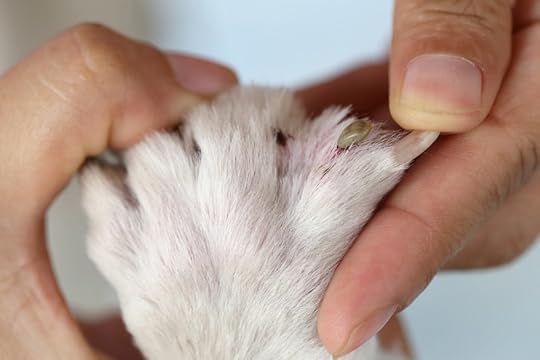
With countless possibilities on the market, you must ask yourself which is the best tick medicine.
There are several drugs with guaranteed effectiveness, with different prices on the market, so, to give you an idea, we are going to recommend some good options. It is important to point out, however, that before using any medication on your dog, it is necessary to take him to a veterinary appointment.
1. BravectoA remedy with an excellent evaluation on the market is Bravecto, a product that kills ticks and also fleas on dogs and cats and even your home, within 12 hours.
This product is marketed in chewable or transdermal format, in a single dose and ensures up to 12 weeks of protection.
The transdermal for those who don’t know is that medicine for ticks in liquid, which is applied to the back of the pet’s neck and the medicine is absorbed by the skin.
The good thing about this format is that you don’t have to make the pet ingest the oral medicine. Anyone who has ever taken care of a dog knows what we are referring to.
The medicine is sold separately according to the different weights. There are remedies for dogs from 2 kg to 56 kg, with specific dosages.
2. NexgardThis is another type of chewable medicine with anti-flea and tick action. With a taste of meat, it acts very quickly, killing parasites in up to 8 hours.
The big difference between Bravecto and NexGard is that NexGard only works for 30 days.
Therefore, the pet needs to use the medicine once a month. There are also different dosages on the market for each pet weight range.
3. SimparicAnother antiparasitic indicated by professionals in the area is Simparic. It also has a chewable format, easily accepted by pets due to its pleasant taste to the canine palate.
Simparic is good for preventing fleas, ticks and also for treating three types of mange – demodectic, sarcoptic and otodectic.
Its effect is prolonged for 35 days, after which it is necessary to reuse it. According to the drug’s manufacturer, it begins to act in three hours and was made for puppies from 8 weeks of age and 1.3 kg.
4. Flea and tick collarsThere are also excellent collar alternatives that treat ticks and fleas, as the pet moves, toxins are released.
However, don’t be worried, these released substances will not affect your dog’s health.
Collars generally act for 3 months. To ensure full effectiveness, take some precautions:
Do not use in females when they are lactating or breastfeeding;
Do not let the collar be close to the dog’s mouth;
Use only if your puppy is over 6 weeks old.
5. Natural Remedies for TicksIf you like to avoid using chemical medications, another possibility of how to treat ticks in a dog is to resort to natural ones. If you see ticks on your dog’s body or notice signs of redness, swelling, excessive itchiness or other symptoms, do at home:
Natural oils: make a mixture of lemon, lavender, basil and cedar oils in a container and apply the combination to the animal’s skin;Chamomile infusion: wait for it to cool down and place a cotton pad or clean cloth soaked in chamomile tea over the pet’s skin. Chamomile will act as a natural repellent against parasites;Another natural repellent is lemon: To make the application, boil 2 cups of water and add two lemons cut in half. After an hour on low heat, remove the lemons, wait to cool down and pour the liquid into a spray bottle. Now, spray it over the dog, being very careful not to get it in the eye area.It is worth noting that these homemade recipes are less effective than other remedies and act for much less time. As we said earlier, before making any decision, take your animal to the veterinarian’s appointment.
It is not enough just to administer a medicine or homemade solution. It is also important to take care of the cleanliness of the environment where the animal lives. One tip is to apply Butox in the backyard. The proper spraying of this product is 10ml per 10L of water.
The post How to treat ticks on a dog? 5 best remedies appeared first on John's Blog.
How to treat ticks on a dog? 5 shapes
Learn how to effectively treat dog ticks! Discover the 5 best remedies to use in the treatment of your pet
Using dog tick medications, whether natural or not, is a great way to protect against the frightening “ tick disease ”.
After all, among other ways to treat ticks in dogs, this is how you can keep the parasite away from your pet, avoiding the dreaded bites.
In addition to causing itchiness, this disease can be very dangerous for dogs, if not treated, it can lead to death. Therefore, to help you treat your dog, we have separated 5 types of tick medications. Check out!
Medicines for ticks: 5 optionsWith countless possibilities on the market, you must ask yourself which is the best tick medicine.
There are several drugs with guaranteed effectiveness, with different prices on the market, so, to give you an idea, we are going to recommend some good options. It is important to point out, however, that before using any medication on your dog, it is necessary to take him to a veterinary appointment.
1. BravectoA remedy with an excellent evaluation on the market is Bravecto, a product that kills ticks and also fleas on dogs and cats and even your home, within 12 hours.
This product is marketed in chewable or transdermal format, in a single dose and ensures up to 12 weeks of protection.
The transdermal for those who don’t know is that medicine for ticks in liquid, which is applied to the back of the pet’s neck and the medicine is absorbed by the skin.
The good thing about this format is that you don’t have to make the pet ingest the oral medicine. Anyone who has ever taken care of a dog knows what we are referring to.
The medicine is sold separately according to the different weights. There are remedies for dogs from 2 kg to 56 kg, with specific dosages.
2. NexgardThis is another type of chewable medicine with anti-flea and tick action. With a taste of meat, it acts very quickly, killing parasites in up to 8 hours.
The big difference between Bravecto and NexGard is that NexGard only works for 30 days.
Therefore, the pet needs to use the medicine once a month. There are also different dosages on the market for each pet weight range.
3. SimparicAnother antiparasitic indicated by professionals in the area is Simparic. It also has a chewable format, easily accepted by pets due to its pleasant taste to the canine palate.
Simparic is good for preventing fleas, ticks and also for treating three types of mange – demodectic, sarcoptic and otodectic.
Its effect is prolonged for 35 days, after which it is necessary to reuse it. According to the drug’s manufacturer, it begins to act in three hours and was made for puppies from 8 weeks of age and 1.3 kg.
4. Flea and tick collarsThere are also excellent collar alternatives that treat ticks and fleas, as the pet moves, toxins are released.
However, don’t be worried, these released substances will not affect your dog’s health.
Collars generally act for 3 months. To ensure full effectiveness, take some precautions:
Do not use in females when they are lactating or breastfeeding;
Do not let the collar be close to the dog’s mouth;
Use only if your puppy is over 6 weeks old.
5. Natural Remedies for TicksIf you like to avoid using chemical medications, another possibility of how to treat ticks in a dog is to resort to natural ones. If you see ticks on your dog’s body or notice signs of redness, swelling, excessive itchiness or other symptoms, do at home:
Natural oils: make a mixture of lemon, lavender, basil and cedar oils in a container and apply the combination to the animal’s skin;Chamomile infusion: wait for it to cool down and place a cotton pad or clean cloth soaked in chamomile tea over the pet’s skin. Chamomile will act as a natural repellent against parasites;Another natural repellent is lemon: To make the application, boil 2 cups of water and add two lemons cut in half. After an hour on low heat, remove the lemons, wait to cool down and pour the liquid into a spray bottle. Now, spray it over the dog, being very careful not to get it in the eye area.It is worth noting that these homemade recipes are less effective than other remedies and act for much less time. As we said earlier, before making any decision, take your animal to the veterinarian’s appointment.
It is not enough just to administer a medicine or homemade solution. It is also important to take care of the cleanliness of the environment where the animal lives. One tip is to apply Butox in the backyard . The proper spraying of this product is 10ml per 10L of water.
The post How to treat ticks on a dog? 5 shapes appeared first on John's Blog.
March 18, 2023
Dog with rotten tooth – What to do to treat it?
Dog with rotten teeth is a condition that cannot be ignored. The animal owner should seek a veterinary doctor as soon as possible to better understand the problem and perform the treatment correctly.
Just like humans, dogs also need to take care of their teeth. It is important to always remove leftover food from the animal’s mouth after each meal, so as not to accumulate dirt and, consequently, bacteria. Proper brushing involves using dog-appropriate toothpaste and a brush.
In this article, we’ll talk about the symptoms of a dog with rotten teeth, in addition to addressing the causes, treatments and prevention tips. Follow!
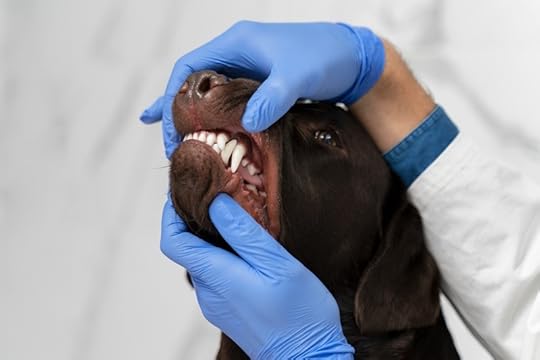
Research shows that 75% of dogs aged between four and eight years have some type of periodontal disease. For this reason, it is important to start taking care of their teeth from a young age.
The dog with rotten teeth is usually the victim of a disease gingivitis periodontitis .
Few people know, but dogs are five times more likely to develop gum problems than humans. This is because pets don’t usually brush their teeth daily. Periodontal diseases manifest frequently among dogs also because the mouth is alkaline, therefore, favorable for the formation of plaques.
Plaques, which form in the canine mouth, result from a buildup of food debris, oral bacteria, saliva, and oral bacteria. When there is no daily brushing, plaques become larger and bacteria multiply at an accelerated pace.
When the dog’s cells cannot fight the bacteria, the tissue in the mouth begins to become inflamed and gradually destroyed. As the condition worsens, the dog may even suffer from the destruction of its bones and lose teeth.
The consequences of periodontitis gingivitis can go far beyond tooth loss. Gum inflammation is responsible for triggering an infection, capable of reaching other parts of the animal’s body. The dog with periodontal or gum disease may be the victim of kidney or heart failure.
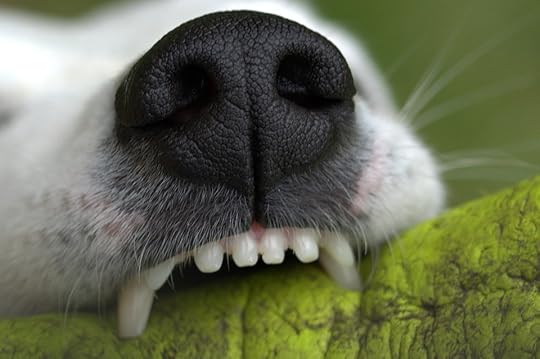
Periodontal disease causes pain in dogs, but not always the owner can identify the signs. To diagnose the problem, it is necessary to observe the symptoms. Are they:
Red and bleeding gums;Swelling and lumps in the mouth;Loose teeth;Gum recession;Painful reaction when eating or drinking water;Viscous and bloody saliva;frequent sneezing;Dog with rotten smell in the mouth;Teeth completely covered by a yellowish plaqueBlackened, broken or loose teethTreatmentSo what to do when your dog has rotten teeth. Read on.
Early diagnosisWhen the tooth affected by plaque still has a solution, the veterinarian performs dental scaling and polishing. In some cases, to save the tooth, the specialist can perform bone grafting. These procedures, however, are only possible in the case of a periodontal disease diagnosed early on.
Late diagnosisIn case the dog has rotten teeth in the mouth, a dental cleaning is not enough. The veterinarian will have to perform surgery to extract the compromised teeth.
Tooth extraction is the most recommended treatment for advanced cases of periodontal disease. Before performing the surgery, the veterinarian subjects the dog to intraoral radiographs.
Look for a specialist in veterinary dentistry and ask him to evaluate your dog. The average price of tooth extraction surgery is R$800.00.
Dog care after tooth extractionAfter the vet pulls out the rotten teeth, your puppy will need special care. Check out some recommendations:
After the animal is discharged, go straight to the house. Do not encourage physical activity and hide hard toys .Feed the dog the same diet he is used to. Offer the pet water.Watch your dog for complications such as bleeding, swelling, or behavioral changes.Rinse the dog’s mouth twice a day using a 0.2% chlorhexidine solution.Seven days after tooth extraction, return to the veterinarian. Only the specialist is able to assess whether the healing of the mouth is occurring correctly.The dog with a rotten tooth suffers from advanced periodontal disease, so it’s important not to take too long to seek treatment. Delay can cause mouth bacteria to spread to the heart, liver, kidneys and even joints. This greatly shortens the pet’s lifespan.
How to prevent rotten teeth in dogs?Correct brushingAs soon as the dog acquires its definitive dentition (this occurs between 7 and 8 months of age), it is necessary to create a toothbrushing routine. As much as the animal hesitates, it is very important for the tutor to insist, until he gets used to the hygiene habit.
The ideal is to brush your pet’s teeth every 3 days, using a specific toothbrush, as well as toothpaste for dogs.
Offer of snacksAnother tip that usually prevents dental problems is to offer snacks that encourage chewing and help maintain the health of the periodontal ligament. Offering bones is also a good idea, as long as the tutor monitors the play.
Do not feed your pet all kinds of food.Certain foods cannot be offered to pets as they harm health as a whole and affect teeth. Therefore, eliminate sweets, milk and soft foods from your dog’s diet.
Mouth cleaningFinally, if your dog has a tendency to develop tartar, the best recommendation is to take him to the vet for an oral cleaning at least once every two years. Thus, healthy teeth can be extended longer.
The post Dog with rotten tooth – What to do to treat it? appeared first on John's Blog.
How to choose a dog for an apartment? The best races!
Living in an apartment is no excuse for not having a pet! However, you need to know how to choose a dog for an apartment. After all, space is reduced and care is redoubled.
Every dog needs attention, health care and hygiene, frequent walks among others. When you have a dog in your apartment, you need to be prepared and know how to deal with the situation. And, most importantly, not all breeds are suitable for small spaces.
Here are some tips for choosing the best dog breed for an apartment:
Dogs for apartmentTo choose a dog breed, you need to keep two things in mind: the place where the animal will live and the personality of the owner.
In this case, you will need to see which animals are compatible with the apartment and, from that list, see which one suits your lifestyle.
More generally, the dog breeds best suited to apartments are the calmest animals and generally small or medium-sized. These animals are also known to be more companions to their owners. That’s why it will be essential to spend time at home with your new friend!
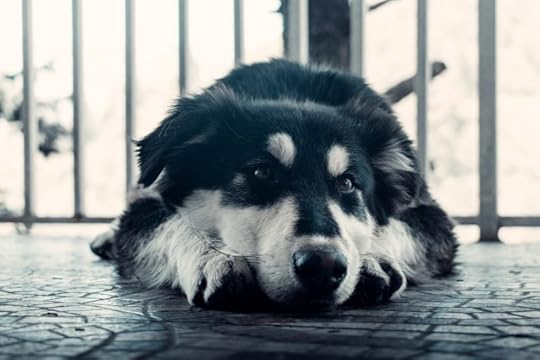
The dogs that get used to the reduction of spaces in apartments more easily are:
English bulldog;French bulldog;Pug ;German Spitz or Pomeranian;Shih Tzu;Lhasa Apso;Chihuahua;Cavalier King Charles Spaniel;Cocker Spaniel ;Yorkshire Terrier;Maltese;Poodle Toy;Bichon Frize;Pinscher;Boston terrier;Dachshund or Dachshund or “sausage”;Basenji;Schnauzer.When deciding which breed to have your future companion, it’s important to find out the characteristics you want him to have. After all, more than beauty, it needs to really be the face of its owner and be able to live in an apartment peacefully.
Calmest dog breed for apartmentThere are several breeds of quieter dogs that are great for apartment living. Every dog needs to play to spend its energy, some have more energy than others.
The pug is usually a lazy and calm little dog. As soon as you look at him, you already feel the calm and pacifism he conveys. It is good for an apartment and also a house where you have children. Due to his breathing problems, he ends up not getting as much exercise as dogs of other breeds.
The English bulldog, despite the evil face, is a sweet animal! He is cute, calm and very attached to his owners. He is a rather corpulent dog, which prevents him from exercising a lot.

There isn’t a dog that doesn’t bark, but there are some breeds that are less noisy than others. Which is great for those who live in an apartment, as they will hardly disturb their neighbors.
Among the dogs that bark the least, we highlight the French bulldog. It is also a calm and quiet breed, making noise only when it really needs attention. They enjoy company a lot, so make sure you have time for them!
The Lhasa Apso is another breed that only barks when necessary. Despite its stinging bark, it doesn’t happen often, only when something is really out of the ordinary or when a stranger arrives. It is very companionable and friendly, it is extremely sad away from its owners.
The pug, in addition to being calm, also makes the list of dog breeds that bark little!
However, the dog breed that stands out the most for practically not barking is the Basenji. This is a somewhat peculiar breed, as it is very similar to cats. Barks are extremely rare, when they make noise and more common use the howls.
Best small dogsThe favorite breeds for those who live in an apartment are usually the ones with the smallest size. Small dogs do not take up much space and are usually very cuddly, delighting their owners when they climb on the couch or bed.
Among the small apartment breeds, some very interesting ones stand out, such as the Yorkshire terrier. In addition to the small version, there are also “minis”, which are even smaller. They have a lot of personality and companionship.

The Cavalier King Charles Spaniel is also a small-sized dog good for apartment living. They love company, are affectionate and very elegant!
Another animal that has appeared a lot around here is the boston terrier. It is a calm, small dog that loves children and other animals. Remember: it’s important that your future partner’s characteristics match your personality!
The post How to choose a dog for an apartment? The best races! appeared first on John's Blog.
Dog Breeding: How to Accustom Two Dogs Together
It is normal for many tutors to decide to have two dogs or more, so that they have company all day long and are never left alone. However, some dogs may take longer to adapt to the arrival of a new pet at home, especially older ones, who tend to back off when a puppy or more agitated dog tries to socialize with them.
If you already have a dog and are thinking about getting another one to raise, check out the following article and find out the best way to raise dogs together in the same house!

The arrival of another dog requires a lot of effort, expense and care. Therefore, it is not a decision that can be taken on impulse. In addition to financial and time organization, it is necessary to prepare the existing house and pet for the move.
To facilitate everyone’s adaptation, it is ideal to look for more sociable dog breeds that are already used to living with other animals. Pug, Golden Retriever, Bulldog, Labrador and Beagles are great examples of pets that get along with both humans and other animals.
Other than that, it is essential to think about the sex of the dog. If you are thinking of having a pet of the opposite sex to the one you already have, it is important that they have already been neutered , to avoid unwanted reproductions.
Also evaluate the space you will have to house two animals. Dogs need space to play, interact and rest. Before you decide to get another dog, make sure that everyone in the household will be able to live comfortably and safely.
Prepare the house for the arrival of the new dogIf, after thinking carefully about the matter, you have decided to have another dog, the time has come to prepare the house to receive it. Many animals do not like to share their belongings, even more so those who are not used to each other. Therefore, ensure that each one has its own bowl of food, drinker, bed, blankets, toys for dogs, etc. Thus, you avoid fights and disputes over territory.
Before the arrival of the new dog, it is also interesting to have synthetic pheromone diffusers. They mimic maternal odor and help reduce stress and make the environment more familiar for pets, making coexistence easier.
Also remember to purchase sanitary mats (so that the newcomer knows where the needs should be done in the new house), transport box, barrier gates, adequate food for the age and size of the new dog and personal objects, such as collar and clothes.

When the time for the meeting comes, follow some dog precautions that can facilitate the adaptation process. The ideal is to increase the contact each day:
1st day: introduce the dogs from afar, so that they can see each other without physical contact;2nd day: promote a physical encounter, but with a barrier to protect them in case of attack. It could be a gate or a transport box, for example;3rd day: put the older dog on a leash and let the newcomer get closer to him to smell it;4th day: let the dogs interact without barriers, but always with supervision.By following these steps, you will ensure that each dog gradually gets used to the other, without generating stress.Learn more socializing tips
In addition to the above tips, you need to teach them that raising the dogs together will make their days more fun. To do this, invest in toys for dogs and try to organize the pets’ routine with several moments to play and walk with the two, especially at the beginning of the adaptation.
Avoid leaving the older dog alone to give attention to the new family member. By playing with the two together, they will realize that from that moment on, the two will always have company and that one will not replace the other.
However, when noticing suspicious and aggressive behavior, look for a professional who specializes in dog training. Thus, you avoid fights and guarantee the coexistence of two behaved dogs. The sooner the setback is resolved, the better for everyone.
The post Dog Breeding: How to Accustom Two Dogs Together appeared first on John's Blog.
Elderly dogs – How to reduce your pet’s stress?
Does your senior dog not want to eat or is he acting differently and more aggressively lately? Pay attention, as he may be going through a stressful period.
Just like humans, animals also get nervous when facing unpleasant occasions and places, but they don’t know how to manage emotions very well and therefore need our help.
Stress tends to be more recurrent in dogs that live in big cities or small apartments and spend most of the day alone, indoors.
In addition to causing inconvenient changes in behavior, such as excessive barking and biting, stress can also harm the animal’s well-being, interfering with blood pressure, immunity and heart rate, in addition to other health complications.
To ensure a good quality of life for your companion at this and at all stages of life, we’ve prepared a list of seven care for senior dogs that you need to take on a daily basis to reduce stress.
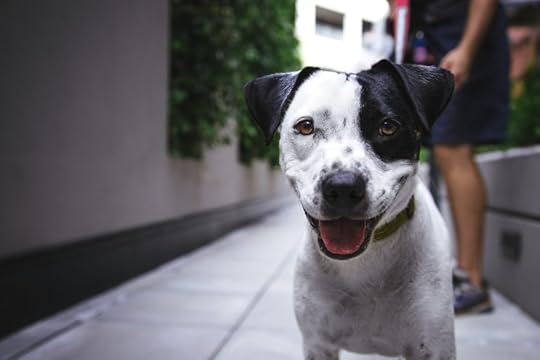
Anyone who has lived with a dog for a long time is certainly familiar with the situations that make him irritable. However, it’s always good to be alert to signs that may indicate that your friend is under the effect of stress, such as:
Lack of appetite;Hair fall;Difficulty resting;Fear;Aggressiveness;Bites;Barking for no apparent reason;Hyperventilation.These behaviors can be triggered by very loud sounds (such as thunder, fireworks or horn), lack of activities, unusual movements in the environment and other situations that make the elderly dog uncomfortable.
Practice exercisesLack of exercise and too much time indoors are two of the main sources of canine stress. Therefore, it is interesting to bet on a slightly more hectic routine, with walks and outdoor games. Always respecting your dog’s limit.
Rather than exposing him to uncomfortable situations, take him for a walk, even around the block. The activity will calm him down and make it easier for him to adapt to new people, animals, sounds and smells.
Keep CalmThis advice is for the dog and for you. Animals have the ability to absorb the humor of their guardians. If you are going through a time of agitation and stress, this can be transmitted to your senior dog.
Therefore, it is important to escape irritation even before your arrival. When you notice yourself or your partner getting nervous, take a break and create some distraction. Avoiding arguments, fights and shouting also contributes to a comfortable and peaceful environment.
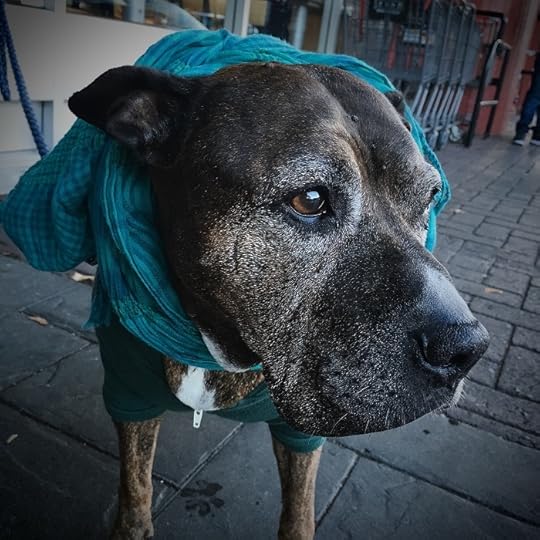
No one likes to go through uncomfortable situations and animals are no different. In difficult times, remember to be kind and pet your dog. This support will not leave him spoiled, but will instill confidence and security in him.
Create a comfortable environmentTime to relax may be just what your senior dog needs to get some peace of mind. For this, separate a quiet room in the house for him. Also provide water, food, blankets and toys, so that he can be alone and rest when he feels the need.
Invest in toysAs we mentioned in the second item, physical activities are essential to avoid stress, and toys are great allies at this time, especially if the dog spends a lot of time without company.
In stores and websites for animals, there are several interactive items that stimulate the movement and natural instincts of the pet, such as balls and dispensers for food, which unite fun and food.
Consult a veterinarianIn addition to trying to reduce stress with routine tips, it is essential to bet on science and listen to the words of an expert on the subject. When noticing nervous behavior and irritation, take your companion to the veterinary hospital and talk to a professional to find the possible causes of the problem.
With the right diagnosis, treatment will be easier and faster. In addition, the veterinarian will find new ways to adapt the routine so that your dog goes through the elderly phase in a peaceful and pleasant way.
The post Elderly dogs – How to reduce your pet’s stress? appeared first on John's Blog.
Scared Dog: What To Do?
It is common for dogs to show fear or aggression under a variety of circumstances. The most frequent phobias in scared dogs are related to thunder, fireworks, car rides and other animals, for example.
Countless factors contribute to the development of trauma and you may find your dog scared out of the blue. To get around these situations, we’ve put together some tips on how to deal with the behavior in the best possible way, highlighting key information on the subject.

If your dog wakes up scared or appears scared frequently, it is extremely important to look for the source of the problem in order to treat it as soon as possible.
As we mentioned, several factors can affect the psychological state of the animal . Find out below the most common reasons and check if one of them may be related to your dog’s daily life:
Absence of primary socializationBetween 8 and 16 weeks of age, puppies go through a crucial period of behavioral development. Therefore, puppies that are not exposed to new experiences during this time become more likely to have fears and traumas in the adult stage.
Despite this, the traumas triggered by the absence of primary socialization can be remedied through the gradual introduction of the factor that generates anxiety, associated with positive reinforcement techniques. You can, for example, introduce new places, people and objects into the scared dog’s daily life. This practice helps to eliminate fear, or at least reduces the constancy and intensity of behavior.
Genetic predispositionGenetic predisposition can also trigger phobias. Just as an animal can inherit traits such as coat color and build from its parents, it can also receive personality traits and grow up to be a scared dog.
It’s difficult to determine whether genetics is really the official cause of the fears, but a starting point is to look into the animal’s family tree to understand the behavior of the parents. It is also important to consider that there are predominant characteristics and personality traits in some species. Therefore, some dog breeds tend to be more restless.
Trauma related to genetic predisposition can be difficult to overcome. However, the help of a behavioral specialist and dog training can be beneficial practices for their quality of life, making the phobia manageable and ensuring more comfort and safety for the dog.
Negative AssociationsNegative experiences can also be responsible for the development of trauma. If the dog associates a person, place, sound, odor or item with a bad experience, it is possible that he will develop a fear and manifest anxiety when he comes into contact with this associated factor.
Often, the link is not related to the episode itself, but to the place where they lived and, sometimes, to some pain or physical injury. Trauma can be remedied through associated techniques of “desensitization” and “counter conditioning”, which consist of reducing the strength of the response to a stimulus, counterbalanced by positive reinforcement techniques.
Therefore, as well as in cases of lack of primary socialization, the introduction of new places, people and objects into the routine can eradicate or reduce the fear of the scared dog.
We emphasize that it is extremely important to keep the animal’s fears under control, because, in more serious cases, fright can cause seizures and permanent neurological damage.
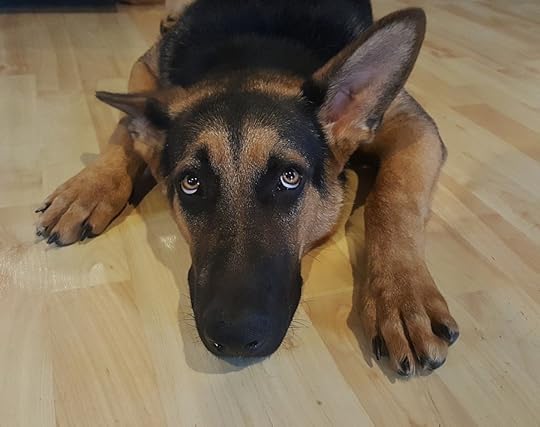
There is a visual communication between dogs and their tutors, based on their perception of human body language. Therefore, when living with us, they will also understand and be guided by our gestures and behavior.
To reassure a scared dog, the first step is to be calm. Gently distract him with some activity to take his attention away from what is causing him anxiety. This way, you will reassure the dog and make him understand that there is no reason to be afraid.
If the attempt to divert the scared dog’s attention is not successful, bet on other ways to correct the problem. Check out tips to work around the most recurring situations:
Fireworks and thunderstormsGet your dog used to the noise: Fireworks and dogs are not a good combination, but behaviorists can teach your dog that noises are harmless. It is also possible to use recordings to accustom the dog to specific sounds. Talk to a dresser to understand about the possibilities;Keep your dog indoors: a dog scared of fireworks tends to run away and, as a result, ends up getting lost or hurt. For that reason, it’s good to keep it in a closed and safe place during explosions;Muffle external sounds: close the windows and curtains to try to muffle the sound. Play some music or turn on the television in an attempt to ensure constant and identifiable sounds that mask the random noise of the rockets;Talk to a veterinarian: if the dog continues to show signs of restlessness in the presence of fireworks noise, evaluate the possibility of a prescription that can calm him down. People and other animalsIf the dog growls at a person or another animal, keep it away: fear and aggression can be associated, especially when the animal has suffered episodic or continuous trauma;Seek expert care: find positive reinforcement best practices for your pet;Anxiety control with physical activities: exercises, such as walks and games, release large amounts of brain neurotrophic factors (BDNF – Brain Derived Neurotrophic Factor), which act on certain neurons of the nervous system and calm the dog;These practices can improve memory, executive functions, and overall health. They also help lower stress and anxiety levels and positively reflect on the relationship with fears. In addition, activities such as walks promote the animal’s socialization with people and other dogs, helping to manage behavioral disorders.
The post Scared Dog: What To Do? appeared first on John's Blog.
March 17, 2023
Very Quiet Dog – Is He Okay?
A very quiet dog is a sign that the dog needs special attention. After all, if he became quiet “out of nowhere”, it is a sign that he has a problem, like some localized pain.
However, it’s important to also consider your best friend’s routine . If it’s a very tiring routine, he might just be resting.
But if it’s a very tedious routine, it may be that the dog is experiencing some kind of canine depression . In other words, the variables are countless. And to help you understand this, here are some reasons that can make the dog very quiet:
Sudden change of routine.Canine depression.Changes in the dog’s environment.Change in the number of family members.A new dog in the environment.Fights or assaults.Localized pain or discomfort.Fear of noises (such as thunderstorms).See below for details on the list above.
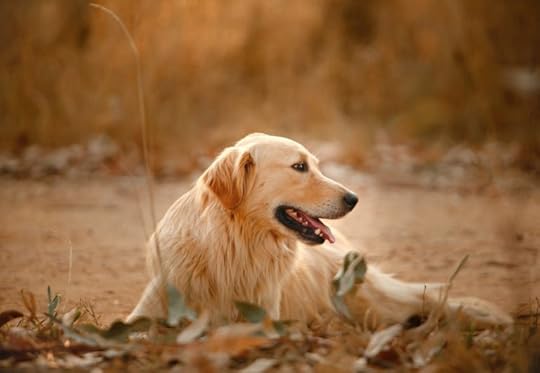
Sudden change of routine
Dogs like routine. The sudden change of routine is a crucial factor for dogs to feel lost in some way. After all, they are used to something, and this “something” just disappears.
Here on the blog, we already have an article that talks about the importance of routine for dogs.
Generally speaking, whenever your best friend’s routine is changed, he will feel it. Dogs like routine. They need routine. And if the routine disappears, they can get a little lost – and sad.
Canine depression
Did you know that dogs have depression too? Yes, this is canine depression. This type of problem is very common in dogs that go through some mentally painful process.
The routine change example we mentioned earlier fits in with this. After all, a dog that changes routine abruptly is a dog that can develop depression.
In addition, he can also become depressed for other reasons, such as the lack of tutor company. Lack of stimuli and energy expenditure can make the dog very quiet. Which can be a sign of depression.
Changes in the dog’s environment
The simplest changes in the environment where your dog lives can make him stay quiet in his corner. After all, it fits with the routine. And routine, as you know, is a determining factor for a dog to feel complete in the environment.
If you move a wall, a piece of furniture or even a window, the dog will feel it. Also, if the changes are sudden, like a house move, the dog can be very apprehensive – and can stay quiet in his corner.
Any kind of change in the dog’s routine can lead to sadness. Or, at the very least, anxiety and stress. Which can later lead to sadness. So be careful with the adjustments you make at home.
Change in the number of family members
Another change that can make the dog very quiet is the number of family members. If you are going to increase or decrease the amount of members inside your house, the dog will feel it.
It can be with the arrival of a baby, the death of a family member or even visits that will “pass for a few days”. All these factors can generate stress in the dog . In severe cases, he can get really low and quiet.
So take care of your dog accordingly. He doesn’t like that kind of sudden movement. And if it has to happen, you need to know what to do with the sad dog.
A new dog in the environment
A very common reason why a dog is too quiet is the presence of another dog in the environment. That is, when the guardian decides to adopt another dog to make friends with the already resident.
Two dogs to keep each other company is a very good thing. Only you need to make this introduction healthy and slowly. After all, the dog that already lives in the house may find it strange.
Introduce the two dogs little by little. Preferably, study the breeds and see how they behave with other pets. If the breed you already have doesn’t like other dogs, don’t get another one.
Fights or assaults
Another factor that can make the dog very quiet is fights or physical or verbal aggression. That is, if the dog is attacked in any way by the owner, he can be absolutely scared and sad.
Many dogs end up becoming aggressive and destructive dogs precisely because of this factor. After all, they feel stressed and anxious about the tutor’s fights.
Therefore, never fight with your dog and much less have violent attitudes. This does not help at all in the conduct of care and well-being.
Localized pain or discomfort
Yes, localized pain and discomfort can be part of the routine and everyday life of a dog that is very quiet. And here, we enter a very complex and broad field.
After all, when it comes to some pain or physical problem, it’s essential that you take your dog to the vet as soon as possible. But to know if that’s right, it’s difficult.
Here’s a tip: observe the dog’s routine. If the mood routine changes overnight, it could be that he has some localized pain or some other problem.
Very quiet dog – Fear of noises (such as thunder)
Another factor that can make your dog lie down quietly in a corner of the house is noise. Yes, dogs can be scared by different types of noises. Including rain and thunderstorms.
Also, firework noises , even from afar, can scare the dog. So, if he is very quiet in his corner, he may be hearing thunder or fire far away.
In that case, the dog will repeat this attitude every time it hears noises. Then you will already know what it is about.
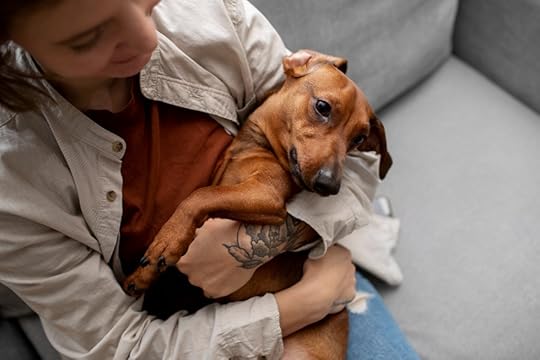
If your dog is very quiet and you don’t know exactly what’s going on, it’s important to consider the “illness” factor. It may not be. But prevention is better than cure.
Some problems or illnesses that can keep the dog quiet in his corner:
Fever;Allergies;Flu/colds;Breathing problems;Vomiting;Diarrhea;Lack of appetite.Some of these problems will show clear signs, such as diarrhea or vomiting. In that case, looking for a vet is easier. However, for other more “hidden” problems, it becomes more difficult to decipher.
Therefore, watch the dog’s routine closely every day. That way you’ll know exactly when he started to get downcast and you’ll be able to understand whether or not it’s a health problem.
Never stop taking your dog to the vet at the first signs of a possible problem. Do not make homemade medications.
What to do with a very quiet dog?If you notice your dog is very quiet at home, it is important to consider some factors to help him, such as:
Balanced food.Routine of games and interaction.Environmental enrichment.Avoid randomness in the routine.Find out more about these aspects below.
Very quiet dog – Balanced diet
A balanced diet is essential to generate well-being and health for your best friend. If he is quiet, he may be sick due to lack of vitamins or nutrients.
So, feed him correctly so that the nutritional loads are adequate.
Routine of play and interaction
The dog needs a proper play and interaction routine. Never stop playing and interacting with your dog. Otherwise, he might be quiet and sad in his corner.
Very quiet dog – Environmental enrichment
Environmental enrichment is a very important factor to make the dog comfortable and happy indoors. They need environmental enrichment to expend physical and mental energy.
Otherwise, they can develop dog depression and then they can be sad and quiet in their corner.
The post Very Quiet Dog – Is He Okay? appeared first on John's Blog.
What are the most common diseases in dogs and cats?
Just like humans, animals are susceptible to various diseases. Unfortunately, they can’t say exactly what they’re feeling, but there are several signs and symptoms that can alert us when something is wrong.
To facilitate observation, we have created a list of the six most common diseases in pets. Check out the definitions, causes, symptoms and prevention tips for each of them below!
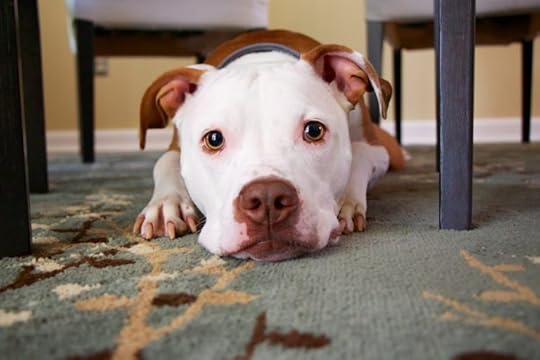
Food allergy is the body’s response to certain substances in animal foods. In most cases, it is caused by additives, preservatives and other chemical elements that make up the feed. Beef protein can also trigger the allergy.
Although it seems like a trivial disease, it can be fatal if not diagnosed in time. Therefore, it is important to know its main symptoms:
Itch;Gastrointestinal problems;Redness;Peeling of the skin.The best way to prevent food allergy is by taking care of your pet’s food: a quality feed is essential to avoid consuming dubious chemical components
Ehrlichiosis (tick disease)Ehrlichiosis is the famous tick disease, a serious infection transmitted by ticks that carry the erlichia bacteria. The parasites contract the disease when they feed on the blood of a sick animal and then infect the new hosts they encounter. Most of the time, the parasite stays in dogs, but nothing prevents cats from being infected too.
Anemia is one of the first symptoms of the disease and can lead the animal to death. In addition to it, the presence of fever, vomiting, bleeding, cough, diarrhea, difficulty breathing, loss of appetite, eye inflammation and body bruises is common.
The treatment of the disease must be done with medicines prescribed by the veterinarian, but you can prevent contamination with some very simple health tips: the first is to apply medicines against ectoparasites. Also, it’s important to always check your pet’s body after walks. Ticks usually settle in the ears, muzzle, neck and paws of animals.
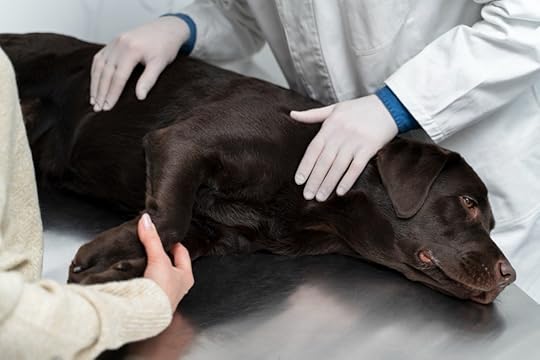
Kidney failure occurs when the kidneys filter improperly, causing the retention of urea and creatinine in the blood, while water, proteins and vitamins are lost in the urine.
The disease can be caused by several factors, such as the aging of the animal, genetic predisposition, infections and serious poisoning. Its most common symptoms are:
Loss of appetite and weight;Vomiting;Diarrhea;Anemia;Clear urine;Increased water consumption.In more severe cases, kidney failure can result in ulcers, high blood pressure and even blindness, requiring hemodialysis treatment.
To ensure the animal’s health, pay attention to signs of behavior change and remember to perform tests and visit the veterinary hospital regularly. The sooner the disease is diagnosed, the easier the treatment will be.
ObesityAn inadequate diet and sedentary lifestyle can cause excess fat in the body and, consequently, lead to several complications for the health of the dog or puppy.
cat, such as diabetes, joint problems, seizures, paralysis and cardiovascular disease.
To identify the disease, pay attention to the main symptoms: visible overweight, increased thirst and shortness of breath and disposition.
To take care of the cat or dog and prevent your pet from becoming obese, ensure a balanced, complete diet without exaggeration, following the daily servings recommended on the packaging and by your veterinarian. Also bet on a routine for the pets , with walks, exercises and games that waste energy.
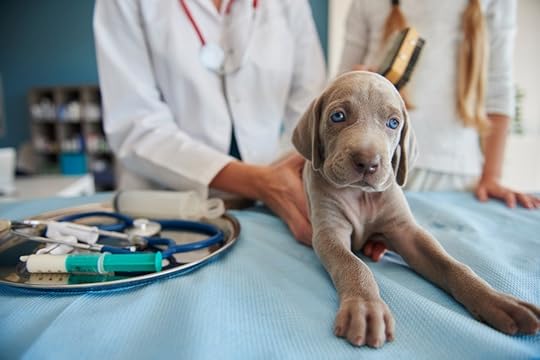
There are those who don’t believe it, but animals are also affected by depression, just like us. The disease still does not have an absolute definition in the animal world, but it is characterized especially by the state of melancholy. She is usually provoked by house changes, routine and long periods without company.
To ensure good treatment as quickly as possible, pay attention to the main symptoms of depression and, when noticing any of them, schedule a visit to the veterinarian:
Lack of appetite and mood;Changes in social habits;Causing wounds on the feet and back;Excessive licking.To prevent illness and improve your friend’s health, bet on physical activity, especially in the case of dogs. Whether indoors or outdoors, exercise contributes to the production of neurotransmitters related to brain well-being.
In addition, walks and games are an excellent opportunity to spend more time with your pet and ensure moments of joy and relaxation. If possible, also avoid intense changes in routine.
OtitisPopularly known as ear inflammation, otitis is usually caused by infections, fungi, excess wax and the presence of parasites. If your treatment is not done properly or on time, the disease can evolve and result in something even more serious, such as meningitis and generalized infection.
Its most frequent symptoms are:
Itchy ears;Excessive head swaying;Yellow and dark discharge;Strong odor in the ear region.One of the main ways to prevent otitis is by protecting your pet’s ears while bathing and cleaning the outer part of the ear. Taking care of the amount of wind he receives in his face, when riding in a car, for example, is also important.
When noticing any atypical behavior or symptoms of any of the aforementioned diseases, you must take the pet to the veterinary hospital as soon as possible. Only a professional can define treatment methods. Under no circumstances medicate him on your own, this could make the disease even worse.
The post What are the most common diseases in dogs and cats? appeared first on John's Blog.



